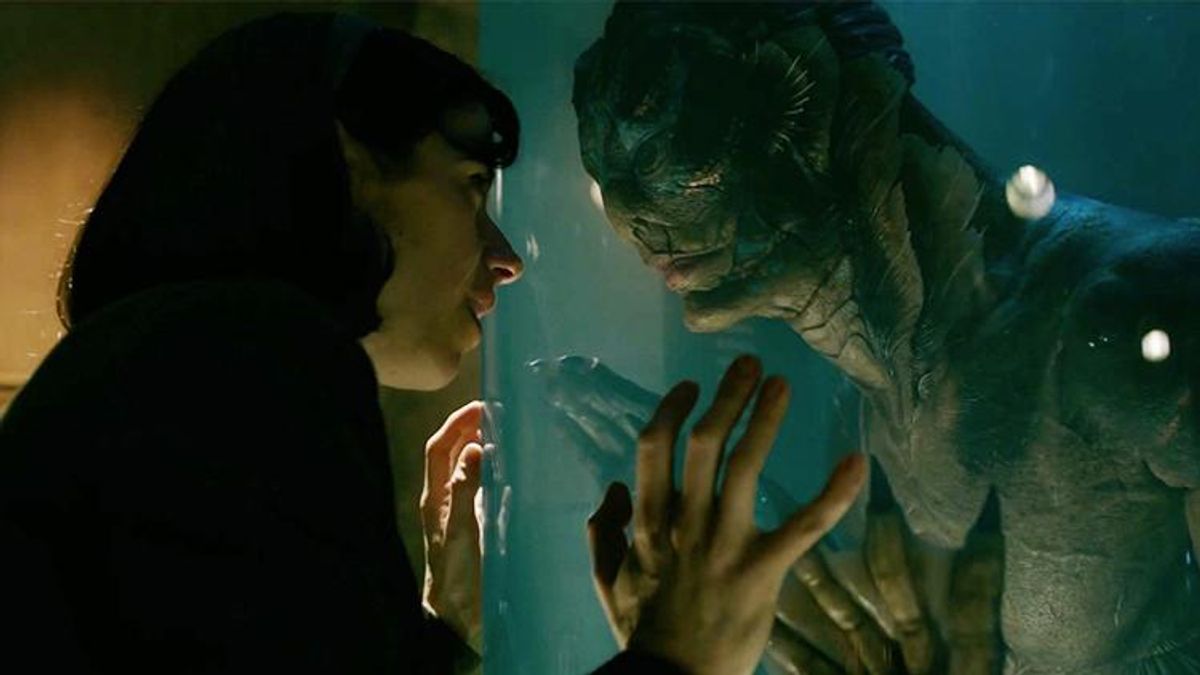Guillermo Del Toro's newest otherworldly adventure, The Shape of Water, finds love in a seemingly hopeless place; set against the height of the Cold War, just weeks before Kennedy's assassination. Amid a time rife with fear, racism, and homophobia, an unexpected love story from the most unlikely of protagonists rises to the surface.
Elisa Esposito (Sally Hawkins) sticks to a strict daily routine; an alarm clock wakes her, a hardboiled egg for breakfast, a timed masturbation session in the bath, a shoeshine, a tedious housekeeping nightshift at a government research facility, a good day's sleep, rinse and repeat. Elisa, who is mute, spends her free time listening to the gossip of her coworker Zelda (Octavia Spencer) or watching escapist TV with Giles (Richard Jenkins), her closeted next door neighbor who prefers the fantasy of television over the brutality of reality. Although both talk at her more than to her, Elisa seems accustomed to her specific kind of loneliness.
Elisa's routine is shaken up when she's assigned to clean the room of "the most sensitive asset ever to be housed in this facility." Plucked from a South American river where the locals believed him to be a god, a monstrously beautiful amphibious creature (Doug Jones) is held captive in the building by the crude Colonel Richard Strickland (Michael Shannon).
Locked in her own cage of sorts, Elisa feels an instant connection to the imprisoned not-quite-merman. Neither can physically speak, so they learn to communicate through gestures, shared meals, and an affinity for romantic jazz records. Despite their isolation, they find solace in each other's company.
A sense of longing flows through the film like a current. Giles has a crush on the bartender at a pie shop and regularly eats the wrong order just for a chance of conversation. Zelda senses the distance growing between her and her husband, but her limitations in the world as a black woman are ever so present. All three characters feel trapped, but their otherness is what binds them together -- and saves the creature.
It's notable to point out that the heroes of this story aren't straight white men. When the casually ignorant and downright abhorrent Colonel Strickland decides the creature is better off dead, Elisa steals him away -- with the help of her gang of misfits -- and hides him in her bathtub. The two bond quicker than ever with their newfound freedom, and after an overnight interspecies sex session, Elisa imagines a future with the creature as she watches his body twinkle like stars in the night sky.
At the heart of the film lies the idea that we all deserve our own fairytale, one that floods the senses. Elisa finds that in the creature, "The way he looks at me, he does not know what I lack or how I am incomplete," she signs to Giles. "He sees me for what I am, as I am."
The Shape of Water is an entrancing modern day fairytale, but more than that, a lesson to anyone who has ever felt unworthy of love. Finding beauty in our scars, in what we believe makes us inferior, is what brings us to life; quite literally in Elisa's case. We all deserve the freedom to be who we are, flaws and all, and be loved for it.


















































































